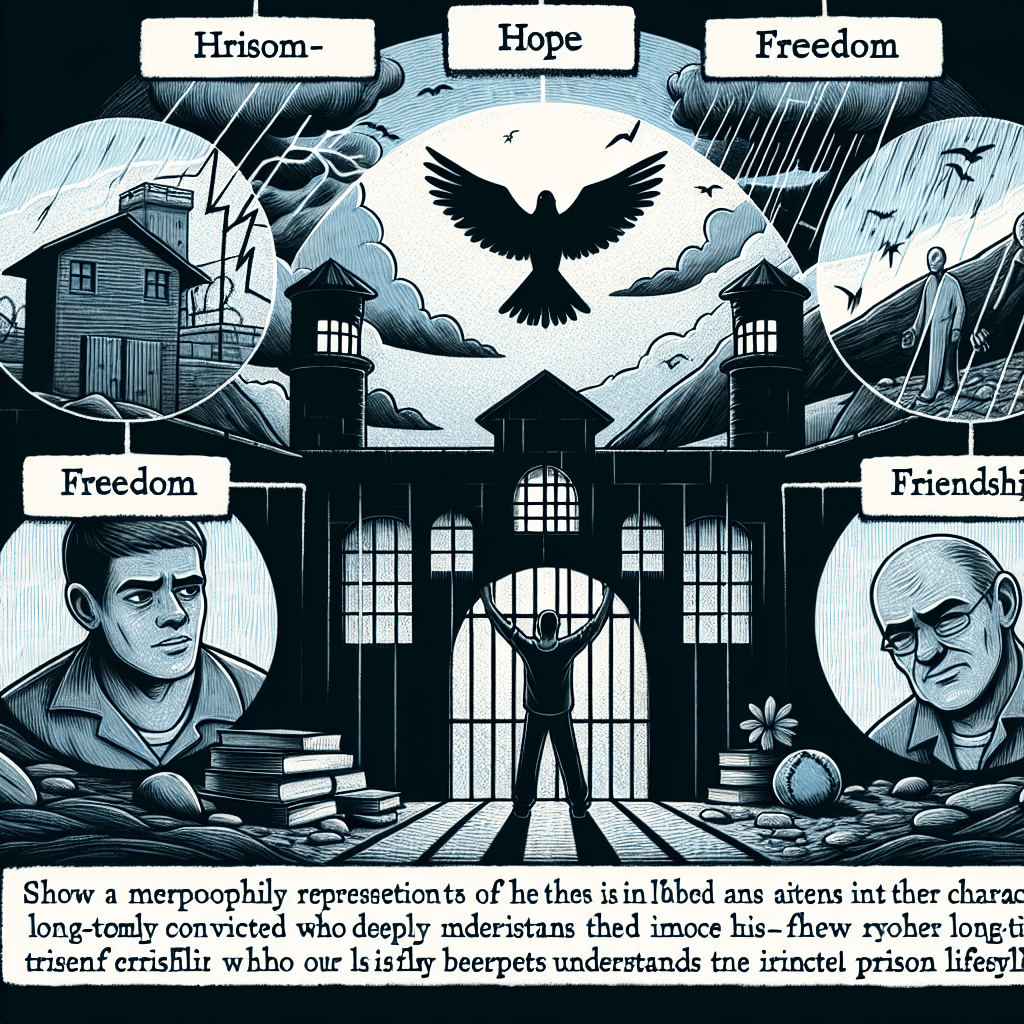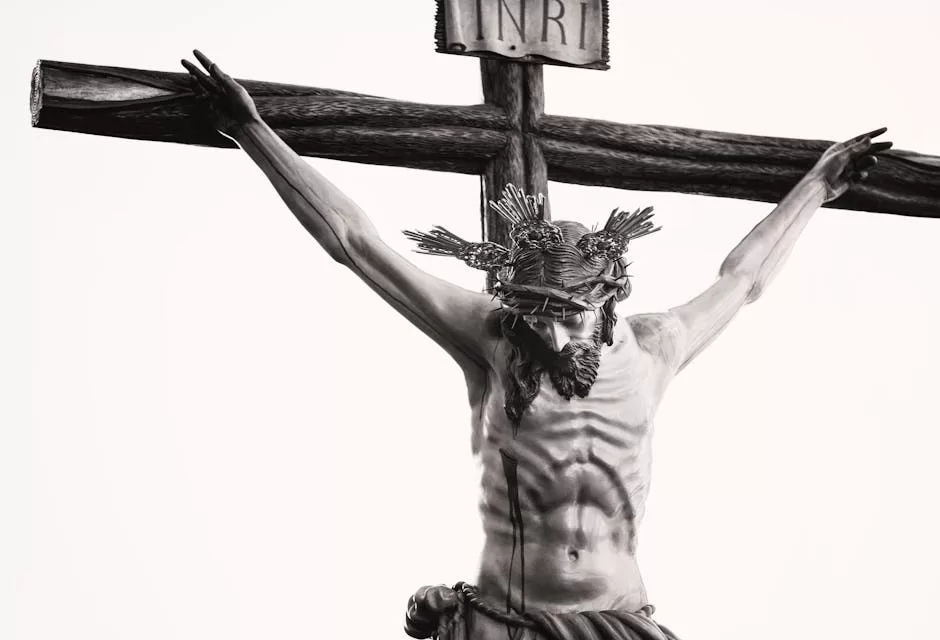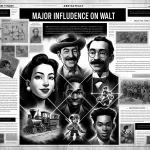-
Зміст
- Rita Hayworth: The Iconic Symbol of Hope in Shawshank Redemption
- The Role of Friendship in Shawshank Redemption
- Themes of Freedom and Confinement in Shawshank Redemption
- Character Analysis: Andy Dufresne and His Journey
- The Significance of Rita Hayworth’s Poster in Shawshank Redemption
- Redemption and Forgiveness: Central Themes Explored
- The Impact of Shawshank Redemption on Popular Culture and Cinema
- ПИТАННЯ ТА ВІДПОВІДІ
“Rita Hayworth and Shawshank Redemption: A tale of hope, friendship, and the enduring spirit of freedom behind prison walls.”
**Introduction to Rita Hayworth and Shawshank Redemption**
“Rita Hayworth and Shawshank Redemption” is a novella by Stephen King, first published in his collection “Different Seasons” in 1982. The story follows the life of Andy Dufresne, a banker wrongfully imprisoned for the murder of his wife and her lover. Set in the Shawshank State Penitentiary, the narrative is told from the perspective of Ellis “Red” Redding, a long-term inmate who becomes Andy’s close friend. The novella explores themes of hope, friendship, and the resilience of the human spirit in the face of despair. Key characters include Andy Dufresne, whose intelligence and determination set him apart, and Red, whose pragmatic outlook on life evolves through his relationship with Andy. The story ultimately highlights the transformative power of hope and the quest for freedom, making it a poignant reflection on the human condition.
Rita Hayworth: The Iconic Symbol of Hope in Shawshank Redemption
In the realm of cinema and literature, few symbols resonate as profoundly as Rita Hayworth in “The Shawshank Redemption.” Originally a novella by Stephen King, the story was adapted into a film directed by Frank Darabont, which has since become a classic. Hayworth, a celebrated actress of the 1940s, serves as a multifaceted symbol of hope and longing within the narrative, representing not only the dreams of the protagonist, Andy Dufresne, but also the broader human desire for freedom and redemption.
Rita Hayworth’s image is first introduced through a poster that adorns the wall of Andy’s prison cell. This seemingly innocuous piece of art transcends its physical form, evolving into a powerful emblem of aspiration. For Andy, who is wrongfully imprisoned for the murder of his wife and her lover, the poster signifies a world beyond the oppressive walls of Shawshank State Penitentiary. It embodies his yearning for a life filled with beauty, love, and ultimately, freedom. The choice of Hayworth, a glamorous figure from a bygone era, further emphasizes the contrast between the harsh realities of prison life and the allure of a more vibrant existence.
As the narrative unfolds, the poster takes on additional layers of meaning. It becomes a tool for Andy’s escape, both literally and metaphorically. The moment he uses the poster to conceal the tunnel he has been digging for nearly two decades is a pivotal point in the story. This act of ingenuity not only highlights Andy’s resourcefulness but also reinforces the idea that hope can be found even in the darkest of circumstances. The poster, therefore, is not merely a representation of a Hollywood star; it is a testament to the resilience of the human spirit.
Moreover, Hayworth’s presence in the film serves to connect the themes of love and loss. Andy’s infatuation with the image of Hayworth reflects his longing for a life that was taken from him. The poster becomes a reminder of his past, a time when he was free to love and be loved. This longing is poignantly juxtaposed with the harsh realities of prison life, where relationships are fraught with despair and isolation. In this way, Hayworth symbolizes not only hope but also the bittersweet nature of memory and desire.
In addition to representing hope and longing, Rita Hayworth also embodies the theme of transformation. Throughout the film, characters undergo significant changes, and Andy’s journey is particularly notable. His initial despair gradually transforms into a quiet determination, fueled in part by the image of Hayworth. This transformation is mirrored in the lives of other inmates, who find solace in Andy’s unwavering spirit. The poster serves as a catalyst for change, inspiring those around him to cling to their own hopes and dreams, no matter how distant they may seem.
Ultimately, Rita Hayworth in “The Shawshank Redemption” transcends her role as a mere symbol; she becomes an integral part of the narrative’s exploration of hope, love, and transformation. Through her image, the film conveys a powerful message about the enduring nature of the human spirit. In a world often marked by despair, Hayworth’s presence reminds us that hope can flourish even in the most unlikely of places, encouraging us to dream of freedom and redemption against all odds. Thus, her legacy endures, not only as an icon of beauty but as a beacon of hope for generations to come.
The Role of Friendship in Shawshank Redemption
In “The Shawshank Redemption,” the theme of friendship emerges as a pivotal element that shapes the narrative and the characters’ experiences within the confines of Shawshank State Penitentiary. The bond between Andy Dufresne and Ellis “Red” Redding serves as the cornerstone of the story, illustrating how companionship can provide solace and strength in the face of adversity. Their relationship evolves from mere acquaintanceship to a profound friendship that transcends the harsh realities of prison life, highlighting the transformative power of human connection.
Initially, Andy arrives at Shawshank as a man burdened by the weight of a wrongful conviction for the murder of his wife and her lover. Isolated and vulnerable, he finds himself navigating a hostile environment filled with violence and despair. It is within this bleak setting that he encounters Red, a seasoned inmate who has adapted to the prison’s brutal culture. Red’s pragmatic outlook on life contrasts sharply with Andy’s quiet resilience, yet it is this very difference that draws them together. As they begin to share their thoughts and experiences, a mutual respect develops, laying the groundwork for a friendship that will ultimately sustain them both.
As the narrative unfolds, the significance of their friendship becomes increasingly apparent. Andy’s unwavering hope and determination inspire Red to reconsider his own outlook on life. Through their conversations, Andy introduces Red to the idea of dreaming beyond the prison walls, encouraging him to envision a future filled with possibilities. This exchange of ideas not only enriches their bond but also serves as a catalyst for personal growth. Red, who has long resigned himself to the inevitability of his circumstances, begins to see the value of hope, a theme that resonates throughout the film.
Moreover, the friendship between Andy and Red exemplifies the importance of loyalty and support in overcoming adversity. In a world where betrayal and self-interest often prevail, their unwavering commitment to one another stands as a testament to the strength of human connection. Andy’s resourcefulness and ingenuity, coupled with Red’s street smarts and connections within the prison, enable them to navigate the challenges they face. Together, they confront the oppressive nature of their environment, finding solace in their shared experiences and mutual understanding.
The culmination of their friendship is poignantly illustrated in the film’s climax, where Andy’s escape from Shawshank serves as a powerful metaphor for liberation—not just from physical confinement, but from the emotional shackles that bind them. Red’s eventual release from prison further underscores the theme of friendship, as he embarks on a journey to reunite with Andy in Zihuatanejo, Mexico. This reunion symbolizes the triumph of hope and the enduring nature of their bond, reinforcing the idea that true friendship can transcend even the most formidable barriers.
In conclusion, the role of friendship in “The Shawshank Redemption” is integral to the narrative, serving as a source of strength, hope, and resilience for the characters. Through the relationship between Andy and Red, the film explores the transformative power of companionship in the face of despair, illustrating how genuine connections can inspire individuals to rise above their circumstances. Ultimately, their friendship not only enriches their lives but also leaves a lasting impact on the audience, reminding us of the profound importance of human connection in our own lives.
Themes of Freedom and Confinement in Shawshank Redemption
In “The Shawshank Redemption,” the themes of freedom and confinement are intricately woven into the narrative, creating a profound exploration of the human spirit’s resilience in the face of oppressive circumstances. The film, adapted from Stephen King’s novella “Rita Hayworth and Shawshank Redemption,” presents a stark contrast between the physical confines of Shawshank Prison and the psychological quest for freedom that defines the lives of its characters. This duality serves as a powerful backdrop against which the story unfolds, highlighting the various ways individuals cope with their imprisonment.
From the outset, the prison itself is depicted as a symbol of confinement, both literal and metaphorical. Shawshank is not merely a place of incarceration; it represents a system designed to strip away individuality and hope. The oppressive environment is characterized by harsh routines, brutal guards, and a pervasive sense of despair. Within these walls, the inmates are subjected to a loss of identity, reduced to mere numbers rather than individuals with dreams and aspirations. This setting establishes a palpable tension between the desire for freedom and the reality of confinement, a theme that resonates deeply throughout the film.
As the narrative progresses, the character of Andy Dufresne emerges as a beacon of hope amidst the bleakness of prison life. His journey is marked by an unwavering determination to reclaim his sense of self and agency, despite the physical barriers that surround him. Andy’s resourcefulness and intellect allow him to navigate the challenges of prison life, ultimately transforming his confinement into a space for personal growth and resilience. Through his actions, he embodies the idea that freedom is not solely a physical state but also a mental and emotional one. His famous line, “Get busy living or get busy dying,” encapsulates this philosophy, urging both himself and his fellow inmates to seek meaning and purpose even in the darkest of circumstances.
Moreover, the theme of friendship plays a crucial role in the exploration of freedom and confinement. The bond between Andy and Red serves as a lifeline for both characters, illustrating how human connection can provide solace and strength in the face of adversity. Red, who initially views the world through a lens of resignation, gradually begins to see the possibility of hope through Andy’s unwavering spirit. Their friendship becomes a catalyst for change, demonstrating that even within the confines of Shawshank, individuals can find freedom through relationships and shared experiences. This dynamic underscores the notion that confinement does not have to equate to isolation; rather, it can foster deep connections that empower individuals to transcend their circumstances.
As the film reaches its climax, the theme of freedom culminates in Andy’s daring escape, which serves as a powerful metaphor for liberation. His meticulous planning and execution reflect not only his desire for physical freedom but also his triumph over the psychological chains that have bound him. The moment he emerges from the sewer into the rain symbolizes a rebirth, a reclamation of his identity and autonomy. This act of defiance against the oppressive forces of Shawshank resonates with viewers, reinforcing the idea that true freedom is an intrinsic state of being that can be achieved even in the most confining of environments.
In conclusion, “The Shawshank Redemption” masterfully explores the themes of freedom and confinement through its rich narrative and complex characters. The film invites viewers to reflect on the nature of imprisonment, both physical and psychological, while celebrating the indomitable spirit of hope and resilience that can flourish even in the darkest of places. Through the experiences of Andy and Red, the story ultimately conveys a powerful message: that freedom is not merely a destination but a journey of the heart and mind, one that can be pursued regardless of external circumstances.
Character Analysis: Andy Dufresne and His Journey
In Stephen King’s novella “Rita Hayworth and Shawshank Redemption,” the character of Andy Dufresne serves as a profound exploration of resilience, hope, and the human spirit’s capacity to endure even the most harrowing circumstances. Andy, a banker wrongfully convicted of murdering his wife and her lover, is sentenced to life in Shawshank State Penitentiary. From the outset, his character is marked by an air of quiet determination and an unwavering belief in his innocence, which sets the stage for his remarkable journey throughout the narrative.
As Andy navigates the brutal realities of prison life, his intelligence and resourcefulness become apparent. He quickly establishes himself as a figure of intrigue among the inmates, particularly through his ability to manage financial matters. This skill not only earns him the respect of his fellow prisoners but also secures him a unique position within the prison hierarchy. By offering financial advice and assistance to both inmates and corrupt prison officials, Andy creates a network of influence that ultimately aids in his survival. This aspect of his character highlights the theme of adaptability, as he learns to maneuver through the complexities of prison life while maintaining his dignity.
Moreover, Andy’s relationship with fellow inmate Ellis “Red” Redding serves as a crucial element in his character development. Initially, Red, who serves as the story’s narrator, views Andy with skepticism, perceiving him as an outsider who does not fully grasp the harsh realities of Shawshank. However, as their friendship deepens, Red comes to admire Andy’s unwavering hope and determination. This bond not only provides emotional support for both characters but also underscores the importance of companionship in the face of adversity. Through their interactions, the narrative emphasizes the transformative power of friendship, illustrating how human connections can provide solace and strength in the darkest of times.
As the story progresses, Andy’s journey becomes increasingly symbolic of the struggle for freedom and redemption. His meticulous planning and unwavering resolve culminate in a daring escape that serves as a testament to his indomitable spirit. The iconic scene in which he crawls through a tunnel of filth to emerge into the rain symbolizes not only his physical liberation but also his emotional and psychological rebirth. This moment encapsulates the overarching theme of hope, suggesting that even in the most oppressive environments, the human spirit can find a way to break free.
Furthermore, Andy’s character embodies the idea that true freedom is not merely a physical state but also a mental and emotional one. Throughout his time in Shawshank, he maintains a sense of purpose, whether through his efforts to improve the prison library or his unwavering belief in his eventual exoneration. This inner strength allows him to transcend the confines of his circumstances, illustrating that hope can flourish even in the bleakest situations.
In conclusion, Andy Dufresne’s character is a multifaceted representation of resilience, hope, and the quest for redemption. His journey through Shawshank serves as a powerful reminder of the human capacity to endure and overcome adversity. Through his intelligence, resourcefulness, and unwavering spirit, Andy not only transforms his own life but also profoundly impacts those around him, leaving an indelible mark on the hearts and minds of his fellow inmates. Ultimately, his story resonates as a testament to the enduring power of hope and the unbreakable human spirit.
The Significance of Rita Hayworth’s Poster in Shawshank Redemption
In the narrative of “The Shawshank Redemption,” the poster of Rita Hayworth serves as a multifaceted symbol that transcends its surface-level representation of beauty and allure. Initially, the poster is introduced as a mere decoration in Andy Dufresne’s cell, yet it evolves into a powerful emblem of hope, freedom, and the human spirit’s resilience. The choice of Rita Hayworth, a prominent actress of the 1940s, is significant not only for her iconic status but also for the way she embodies the dreams and aspirations of the film’s characters, particularly Andy and his friend Red.
As the story unfolds, the poster becomes a crucial element in Andy’s elaborate escape plan. It conceals a tunnel that he painstakingly excavates over nearly two decades, symbolizing the lengths to which he is willing to go to reclaim his freedom. This act of digging represents not just a physical escape from Shawshank Prison but also a metaphorical journey toward self-liberation. The poster, therefore, transforms from a simple image of a glamorous actress into a representation of Andy’s unwavering determination and hope for a better life beyond the prison walls.
Moreover, the poster serves as a poignant reminder of the power of dreams. In a place designed to strip away individuality and hope, Andy’s fixation on the poster reflects his inner desire for freedom and a life filled with possibilities. It stands in stark contrast to the bleakness of prison life, where despair often reigns. The image of Rita Hayworth, with her captivating smile and vibrant presence, becomes a beacon of hope for both Andy and Red, who find solace in the idea that life can exist beyond the confines of their grim reality.
Additionally, the poster’s significance extends to the theme of friendship that permeates the film. Andy and Red’s bond is forged in the harsh environment of Shawshank, and the poster becomes a shared symbol of their dreams and aspirations. It represents the moments of levity and connection they experience amidst the oppressive atmosphere of the prison. As they discuss the poster and what it represents, it fosters a sense of camaraderie that is essential for their survival. The poster, therefore, is not just a solitary symbol for Andy; it becomes a shared dream that strengthens their friendship and provides them with the emotional sustenance needed to endure their circumstances.
Furthermore, the eventual revelation of the poster’s true purpose underscores the theme of perseverance. Andy’s meticulous planning and patience culminate in a moment of triumph when he finally escapes through the tunnel hidden behind Rita Hayworth’s image. This act of defiance against the oppressive system of Shawshank serves as a testament to the human spirit’s ability to endure and overcome adversity. The poster, once a mere decoration, becomes a powerful testament to the idea that hope can flourish even in the darkest of places.
In conclusion, the significance of Rita Hayworth’s poster in “The Shawshank Redemption” extends far beyond its initial appearance. It encapsulates themes of hope, friendship, and perseverance, serving as a vital symbol in Andy Dufresne’s journey toward freedom. Through its transformation from a simple image to a powerful emblem of resilience, the poster illustrates the profound impact that dreams and aspirations can have on the human spirit, even in the most challenging circumstances.
Redemption and Forgiveness: Central Themes Explored
In both Rita Hayworth and Shawshank Redemption, the themes of redemption and forgiveness are intricately woven into the narrative, serving as the backbone of the characters’ journeys and the overarching message of the story. The tale, set against the backdrop of a grim prison environment, explores how individuals can find hope and meaning even in the most desolate circumstances. The protagonist, Andy Dufresne, embodies the quest for redemption as he navigates the harsh realities of Shawshank State Penitentiary. Wrongfully convicted of murdering his wife and her lover, Andy’s resilience and unwavering spirit become a testament to the human capacity for forgiveness, both of oneself and others.
As the story unfolds, Andy’s relationship with fellow inmate Ellis “Red” Redding highlights the transformative power of friendship in the pursuit of redemption. Red, who initially views life through a lens of cynicism shaped by years of incarceration, gradually comes to appreciate Andy’s unwavering hope and determination. This shift in perspective is pivotal, as it illustrates how the act of forgiving oneself for past mistakes can lead to personal growth and liberation. Andy’s ability to maintain his dignity and humanity in the face of adversity serves as a catalyst for Red’s own journey toward self-forgiveness. Through their bond, the narrative emphasizes that redemption is not solely an individual endeavor; rather, it is often facilitated by the connections we forge with others.
Moreover, the theme of forgiveness extends beyond personal relationships to encompass the broader societal context within the prison. The oppressive environment of Shawshank is rife with corruption and brutality, yet Andy’s actions challenge the status quo. By using his intelligence and resourcefulness, he not only seeks to redeem himself but also to uplift those around him. His efforts to improve the prison library and provide educational opportunities for fellow inmates reflect a profound understanding of the importance of second chances. In this way, Andy becomes a symbol of hope, demonstrating that forgiveness can manifest in various forms, including the willingness to help others reclaim their lives.
The narrative also delves into the concept of institutionalization, which complicates the theme of redemption. Many inmates, including Red, struggle with the idea of life beyond prison walls, having become accustomed to the confines of their environment. This internal conflict raises questions about the nature of freedom and the possibility of redemption when one is trapped by their past. However, Andy’s eventual escape serves as a powerful metaphor for breaking free from the shackles of guilt and despair. His journey underscores the notion that true redemption often requires confronting one’s fears and embracing the unknown.
Ultimately, Rita Hayworth and Shawshank Redemption presents a nuanced exploration of redemption and forgiveness, illustrating that these themes are not merely abstract ideals but essential components of the human experience. Through the characters’ struggles and triumphs, the narrative conveys a message of hope, suggesting that even in the darkest of times, the possibility of redemption exists. By fostering connections, embracing forgiveness, and challenging the constraints of their circumstances, the characters illuminate a path toward healing and liberation. In doing so, they remind us that the journey toward redemption is as significant as the destination itself, offering profound insights into the resilience of the human spirit.
The Impact of Shawshank Redemption on Popular Culture and Cinema
“The Shawshank Redemption,” based on Stephen King’s novella “Rita Hayworth and Shawshank Redemption,” has left an indelible mark on popular culture and cinema since its release in 1994. Initially, the film did not achieve significant box office success, but over the years, it has garnered a devoted following, becoming a staple of American cinema. Its impact can be seen in various aspects of film, television, and broader cultural references, illustrating the profound resonance of its themes and characters.
One of the most notable contributions of “The Shawshank Redemption” to popular culture is its exploration of hope and resilience in the face of despair. The film’s protagonist, Andy Dufresne, portrayed by Tim Robbins, embodies the struggle for freedom and the human spirit’s capacity to endure. This theme has inspired countless viewers, leading to the film being frequently quoted and referenced in various media. Phrases such as “Get busy living, or get busy dying” have transcended the film itself, becoming part of the lexicon of motivational discourse. This enduring message of hope has made the film a source of inspiration for many, reinforcing its status as a cultural touchstone.
Moreover, the film’s narrative structure and character development have influenced filmmakers and writers across genres. The relationship between Andy and Red, played by Morgan Freeman, serves as a poignant exploration of friendship and loyalty. Their bond, forged in the harsh realities of prison life, highlights the importance of human connection, a theme that resonates deeply with audiences. This dynamic has inspired numerous films and television shows that seek to capture similar relationships, demonstrating how “The Shawshank Redemption” has shaped storytelling conventions in contemporary cinema.
In addition to its thematic depth, the film’s cinematography and direction have also left a lasting impact. Directed by Frank Darabont, the film employs a visual style that enhances its emotional weight. The use of light and shadow, along with the careful framing of shots, creates a sense of confinement and isolation that mirrors the characters’ experiences. This artistic approach has influenced a generation of filmmakers, who have drawn inspiration from Darabont’s techniques to convey complex emotions and narratives in their own works.
Furthermore, “The Shawshank Redemption” has become a cultural phenomenon through its presence in various forms of media. It has been referenced in television shows, parodied in comedies, and even analyzed in academic settings. The film’s exploration of themes such as justice, redemption, and the human condition has made it a subject of study in film courses and literature classes alike. This academic interest underscores the film’s significance beyond mere entertainment, positioning it as a work worthy of critical analysis.
As a testament to its enduring legacy, “The Shawshank Redemption” consistently ranks among the greatest films of all time in various polls and lists. Its ability to resonate with audiences across generations speaks to the universal nature of its themes. The film’s exploration of hope, friendship, and the quest for freedom continues to inspire and provoke thought, ensuring that its impact on popular culture and cinema will be felt for years to come. In conclusion, “The Shawshank Redemption” stands as a powerful reminder of the resilience of the human spirit, leaving an unforgettable imprint on the landscape of film and the hearts of its viewers.
ПИТАННЯ ТА ВІДПОВІДІ
1. **What is the main plot of “Rita Hayworth and Shawshank Redemption”?**
– The story follows Andy Dufresne, a banker wrongfully imprisoned for the murder of his wife and her lover. He befriends fellow inmate Ellis “Red” Redding and uses his intelligence to survive and ultimately escape from Shawshank Prison.
2. **What are the central themes of the story?**
– Key themes include hope, friendship, the power of the human spirit, and the corrupting influence of institutionalization.
3. **Хто є головним героєм історії?
– Andy Dufresne is the protagonist, whose resilience and ingenuity drive the narrative.
4. **Who is the narrator of the story?**
– Ellis “Red” Redding serves as the narrator, providing insight into prison life and Andy’s journey.
5. **What role does hope play in the story?**
– Hope is portrayed as a vital force that sustains the characters, particularly Andy, as he dreams of freedom and a better life beyond prison walls.
6. **How does the character of Red evolve throughout the story?**
– Red evolves from a pragmatic, cynical inmate to a hopeful individual who learns to embrace life outside of prison, inspired by Andy’s determination.
7. **What is the significance of the title “Rita Hayworth and Shawshank Redemption”?**
– The title references a poster of Rita Hayworth that Andy uses to conceal his escape route, symbolizing both the allure of dreams and the ultimate quest for freedom and redemption.Rita Hayworth and Shawshank Redemption, a novella by Stephen King, explores themes of hope, friendship, and the struggle for freedom within the confines of a prison. The story follows Andy Dufresne, a banker wrongfully convicted of murder, who forms a deep bond with fellow inmate Red. Through Andy’s resilience and ingenuity, he not only survives the harsh realities of Shawshank Prison but also inspires hope among his fellow inmates. The characters are richly developed, with Andy representing the indomitable spirit of hope and Red embodying the wisdom gained from years of incarceration. Ultimately, the novella highlights the transformative power of hope and the human capacity for redemption, making it a poignant reflection on the nature of freedom and the human spirit.







